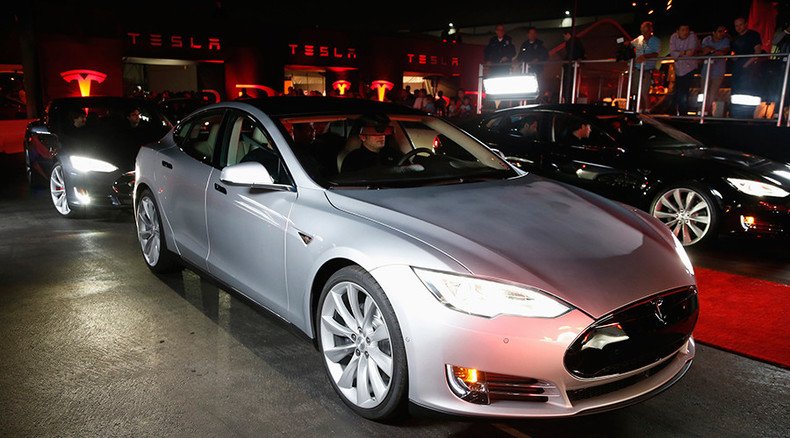Researchers hack & remotely control Tesla Model S, inform manufacturer to fix bugs

Software vulnerabilities in Tesla’s Model S cars have allowed cybersecurity experts to completely take over the vehicle's electronic system and even shut down the car remotely. The company already introduced a patch for the discovered bugs.
Marc Rogers, principal security researcher at Cloudflare, and Kevin Mahaffey, chief technology officer of Lookout, managed to gain remote control of the Model S after initially tinkering with the vehicle’s electronic system.
Using the hidden cable installed in Tesla cars for maintenance and technicians to fix flaws, the security experts were able to search for flaws in software. They tricked the system into thinking their laptop was the car itself and eventually got administrative access to the vehicle.
“We spoke to Tesla as the car, and essentially requested permission for more information,” Rogers told NPR. “Once we had that foothold, we then took over all the computers in the car.”
Once full access was gained, they were able to control Tesla remotely. The cybersecurity analysts built themselves a backdoor to perform any action available to the car’s owner via the Tesla’s s touch screen or smartphone app.
According to the blog explanation of the hack by Mahaffey, the Tesla Model S can be brought to a complete halt at speeds of less than five miles per hour by remotely sending out commands to apply the emergency hand brake. At higher speeds, the vehicle shuts off its engine but “gracefully” allows drivers to control steering and braking before the car eventually stops.
The computer experts were also able to control the speedometer to display the wrong speed, lower and raise the windows, lock and unlock the $100,000 car.
READ MORE: Hackers successfully infiltrate, control Chrysler vehicle system during experiment
While direct access to the vehicle was required to perform the hack, Rogers and Mahaffey still warn that hackers could eventually compromise a driver’s safety.
“Attackers may compromise the browser in a vehicle’s infotainment system in order to get access to the more dangerous vehicle drive systems—brakes, steering, acceleration, etc,” they warned.
The two San Francisco based hackers notified Tesla about the security issues via an email. They were later invited to a meeting to explain their findings.
“In order to realistically patch vulnerabilities at the frequency they are discovered, manufacturers must implement an over-the-air patching system into every connected car. We are happy to report that Tesla has built such a system,” Mahaffey said in his blog.
READ MORE: Planes, guns and automobiles: 5 scariest hacking targets
Tesla now says that the company has developed a solution to the security flaws, which was already transmitted to Model S as a software update that can be downloaded by the driver via WiFi or cellular connection.
Despite unveiling security risks in the car, Mahaffey and Rogers “confirmed that Tesla indeed made a number of excellent security decisions in the design of Tesla Model S.”
The cybersecurity experts will present their finding on Friday at Def Con hacking conference in Las Vegas.












